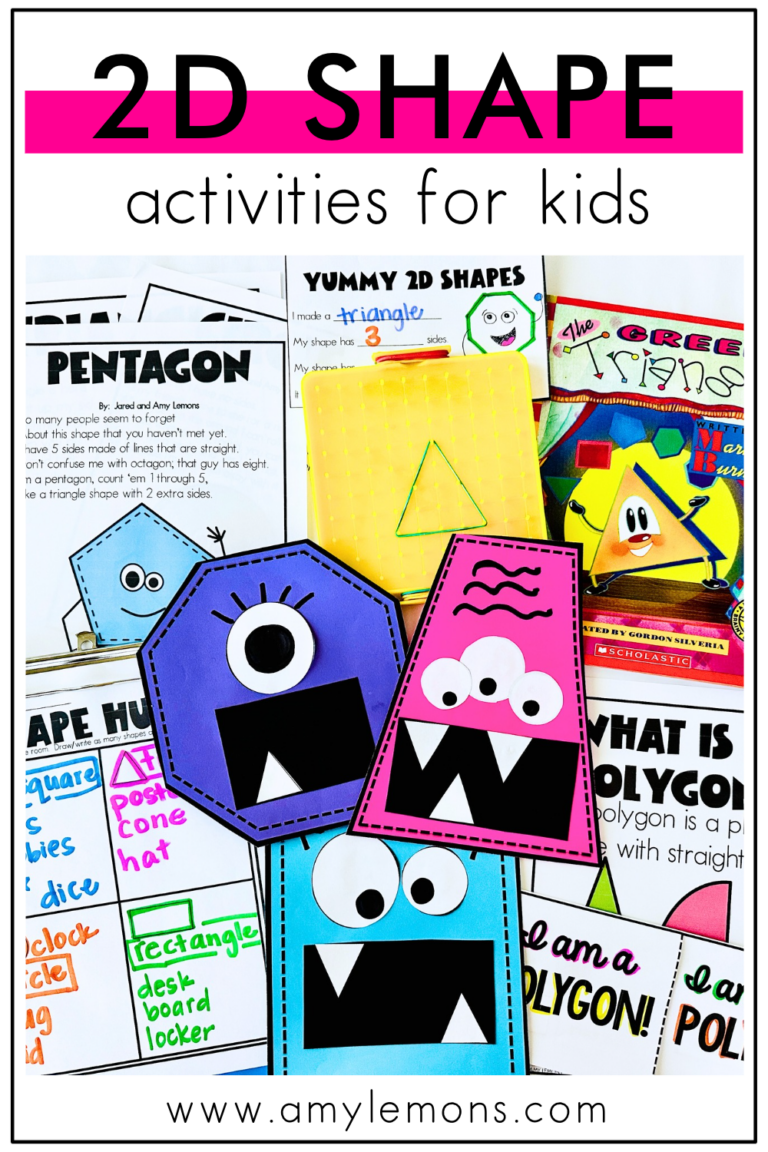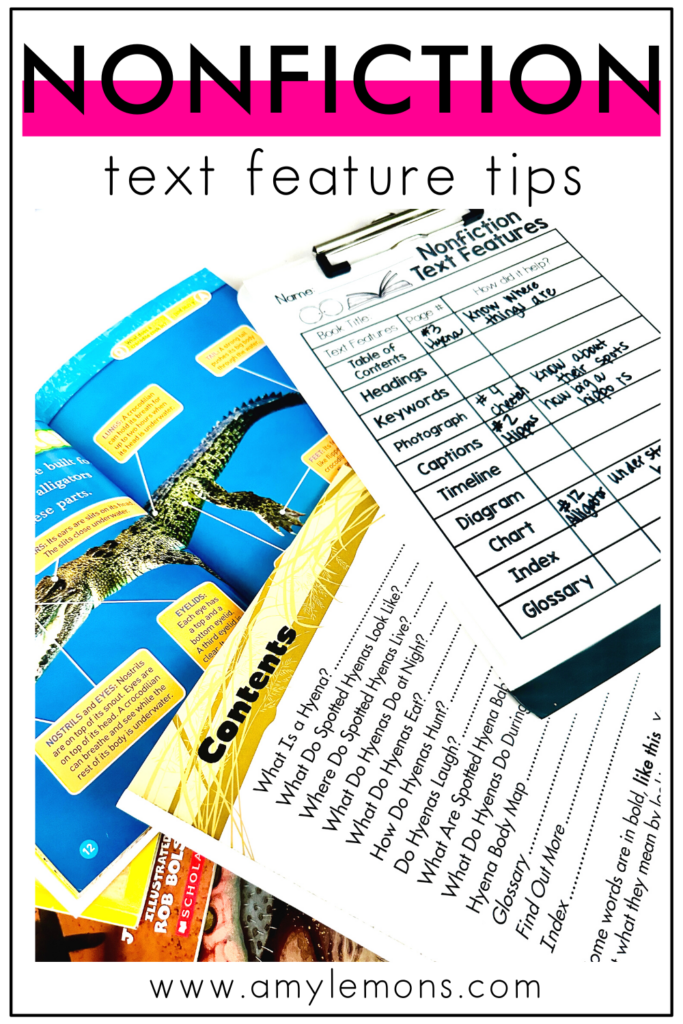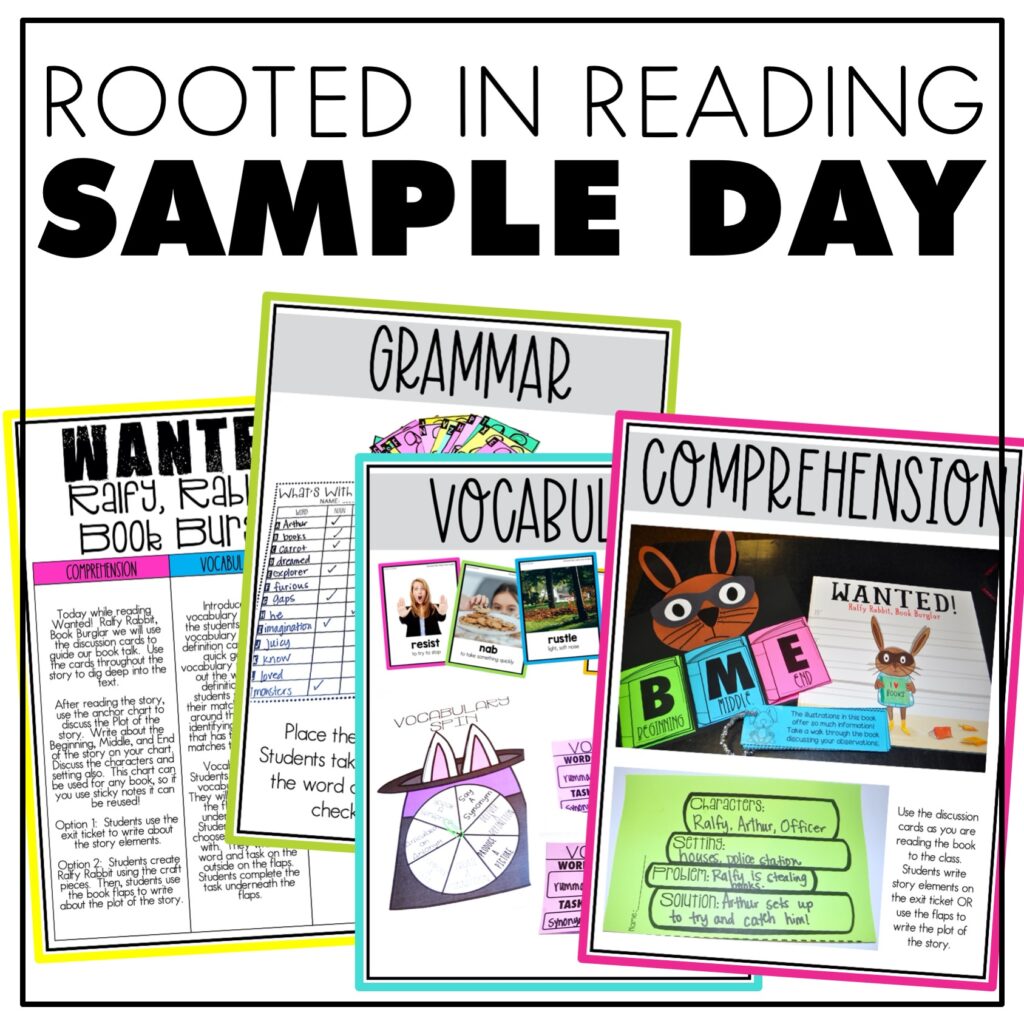

I’ll give you your first tip to teach nonfiction text features to your students: teach them why nonfiction text features matter first.
Nonfiction text features provide context, organization, and visual aids that enhance the readers’ understanding of the text. The goal of teaching students to identify nonfiction text features is to help them use those features to deepen their understanding. Especially important for nonfiction reads that tend to be less entertaining and more informative.
When you’re ready to teach nonfiction text features, use strategies that introduce and provide the purpose of nonfiction text features then, complement your strategy with purposeful plus fun activities!
I’ll be sharing some teaching strategies, activities, and a free resource you can use to get started right away!
Begin your lesson on nonfiction text features by introducing a nonfiction text. Before reading, explain to your students what makes text nonfiction — it includes actual events and facts, information for us to learn, and various text features.
Take some time to discuss how we read nonfiction texts differently than fictional stories. You can point out that we typically read nonfiction texts to learn and the authors include several features to help us understand better.
Come prepared with a set of book questions to help guide the discussion before, during, and after reading the text. In this phase of the lesson, you’ll want to use your “before reading” questions to drive out any initial thoughts or understandings students have.
I am always for taking the slow approach when introducing any new skill to students. Before bombarding your students with all the nonfiction text features, take a step back and see what they already know.
A simple nonfiction text features checklist like the one pictured above is an easy way to observe this.
Begin reading a portion of the nonfiction text and have students follow along with their checklist in hand. As you read, your students can check off the nonfiction text features they notice.
Some questions you can ask your students are:
Only read a portion of the text so you’re only introducing a few features at first. Then you can take time to dig deeper into what the students notice and eventually, continue with introducing more nonfiction text features.
Now that students understand the purpose of a nonfiction text, and have had exposure to text features, it’s time to introduce more text features.
Pull out a set of text feature posters! Displaying posters will ensure students are following the lesson. Make sure the posters clearly explain and provide examples of what students should be looking for.
With the posters as a guide, take some time to go deeper than before. Give examples of text features that can be spotted within the text you’re using.
Here’s a list of nonfiction text features to highlight:
Understanding the various text features available can be intimidating at first. That’s why it’s important not only to not introduce them all at once but also to offer many aids for your students.
Incorporate a chant that helps your students recall important nonfiction text features as they’re learning as a class and reading independently.
These two elements will act as tools to organize their thought process and guide students while reading.
As you read through the nonfiction text, have students begin to explore and point out text features they see. Create an anchor chart to help organize and display the features that come up. Be sure to include not only the feature but also, how it helped your students.
Your anchor chart should be an ongoing display that highlights text features and the ways they help the reader learn more about the subject. For example, pictures give us a visual, a diagram gives us more info about how something works, captions tell what is going on, and maps show us specifics on locations.
We want our readers to understand the purpose of the text features because they help us comprehend the text better. We don’t want to just simply know what a caption is, but how it helps the reader.
At this point, you’ve identified what students know, explained what text features are, deep-dived into text features found in your text, and clearly explained how they help us comprehend better.
Now, it is time to add some fun elements to the learning process. Introduce a hands-on, engaging activity to help students put their learnings to practice.
Send your students on a “scavenger hunt” to find as many nonfiction text features they can in a variety of nonfiction texts you provide or have them browse the classroom and/or school library for books or magazines to use.
Hand students a recording sheet with a list of the text features they are tasked with finding. They can use the sheets to keep track of the nonfiction text features they see AND how it helps them as a reader.
Having multiple book options available for this is beneficial because not every nonfiction book has every text feature. If they can’t find them all that’s okay, too. The important part is that students can identify what they are and they can articulate how they help them understand what they’re reading.
Add in other activities to keep the practice going. I’ve compiled a few other nonfiction text feature activities for you.
I hope these strategies have you feeling equipped to teach your students what nonfiction text features are, why they are important, the purpose of text features, and how nonfiction text features help us all with comprehension.
You can put all that’s learned to the test with this FREE labeling activity! Students will be provided with a word bank of text features and their task will be to identify the text feature being shown.
Grab the printable and digital versions for FREE in my shop!
Looking for something more extensive to help you teach nonfiction text features? Our November Rooted in Reading features a comprehensive set of lesson plans and engaging activities for teaching nonfiction text features— like the ones mentioned in this post.

Transform your ELA block with quality picture books and hands-on reading activities designed to enhance comprehension in your classroom! This complete unit features Fall lesson plans for comprehension, vocabulary, grammar, …
You’ll have everything you need plus:
And more including plans for Character Dialogue, Making Inferences and Schema, and Making Connections with the Text!

Hey, y’all! My name is Amy Lemons and I am passionate about providing students with both engaging and effective standards-based Math and ELA lessons.

Sample a day of Rooted in Reading with these lesson plans and activities for Reading Comprehension, Vocabulary, and Grammar!


